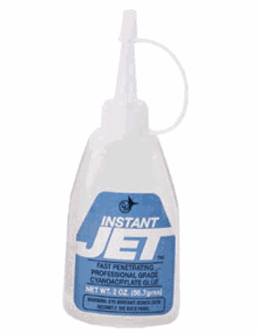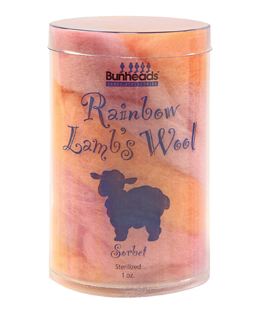Let's start with a little anatomy lesson. Ever wonder what the inside of your pointe shoes look like? Every pointe shoe is made up of a few basic pieces. Take a closer look!
- Platform: the part of the pointe shoe on which the dancer stands when en pointe
- Box: the stiff toe cup that encases the toes
- Vamp: the part of the shoe that covers the tops of the toes and the foot
- Throat: the opening of the shoe nearest the toes
- Wings: the stiff part of the side of the shoe that can vary in length from the box to the waist seam
- Shank: the stiff insole that provides support
- Outer Sole: the bottom part of the shoe, usually made of synthetic or leather, which is in contact with the floor when the dancer stands in the normal flat position
- Sock Lining: the soft inner pad that comes in contact with the bottom of the dancer's foot
As you can see, different brands follow a general guideline when it comes to pointe shoe making. (This explains why they don't look like a tap shoe!) However, different brands do have minor differences specific to only their shoes. For example, the sock lining in a Grishko pointe shoe is firmly sewn down where as the sock lining of a Capezio or Bloch pointe shoe is lightly glued down. The reason for this comes down to personal customizations. As we all know, everyone's feet are different and finding the perfect shoes comes more easily for some of us than others. A lightly glued sock lining allows it to be separated so modifications, such as cutting the shank to the 3/4 or 1/2 length, can be made.
Other modifications can include:
- Jet Gluing the inner platform, shank, and outer sole for added strength
- Sewing darts or pleats in the satin between the waist seam and the heel seam to remove excess bagginess - Check out this video posted by The New York City Ballet to learn more about the importance of a properly fitting and streamlined pointe shoe
- Darning the platform of your pointe shoes
With that in mind, let's talk about ordering pointe shoes online. You have found your perfect shoe and you order the same thing all the time. Your newest pair arrives and something doesn't seem quite the same as your last pair. Why is that?
Let's use our own Liz as an example. Her shoe is a Russian Pointe Rubin with a V Vamp, size 37 Width 3 Vamp 2 Flex Soft. Just before her winter performance, she ordered 14 pairs of this shoe. When they arrived, she unboxed all of them and laid them out on the floor. Even though all of the shoes were the same size, they were made by different Makers and the subtle nuances were noticeable to her, especially when laid side by side. She then chose the shoes she liked the best out of all 12 pairs and used them for her performances.
For more on Makers, this lovely article, written by The Gentle Author, showcases some of Freed of London's pointe shoe Makers and how dedicated they are to their craft.
So what happens if you've tried on countless shoe styles but can't quite seem to find the right one? Your toes feel like they are jamming into the floor and the pain in your joints is unbearable? Think back to your pointe shoe fitting. Were you asked the following questions?:
- "Are all of your toes lying flat inside the box of the shoe?"
- Toes should not be curling up (shoes too small) or overlapping (box too narrow)
- "Can you feel the end of the shoe with your longest toe?"
- For some people, this is the big toe, for others, this is the second toe. The longest toe should be gently pressing against the inside platform, without causing the toe to scrunch up.
- "Do you feel supported under your arch?"
- The shank of the shoe should press flat against the arch of your foot and stay centered while on pointe. A shank that twists off the heel of your foot is the result of a box that is too narrow or a shank that is too hard.
- "Do you feel as though your toes are sliding down into the box when you rise onto pointe?"
- Your foot should be held firmly in place inside the shoe regardless of whether or not you are standing flat or up on your shoes. If, when rising onto pointe, you feel as though your foot is sliding down, either the box is too wide or the shoe is too big.
- The last major criteria that will be checked during a fitting is the amount of "pinch" in the heel fabric when on pointe. Different ballet teachers have different preferences. More traditional teachers tend to prefer as little pinch as possible. The industry standard for the acceptable amount of "pinch" is not more than the width of the heel seam of the shoe.
The next step in your pointe shoe process may need to include some gel pointe shoe accessories. Many dancers like to use toe pads. They are especially helpful at taking up that little bit of extra space in your pointe shoes. If you or your teacher is a little more old school, like Liz, lambs wool is a great alternative to toe pads. Now back to those pinching and aching toes. Some gel spacers can make sure your bones are all in proper alignment while in your pointe shoes. All of these things can change the way your feet align and therefore how shoes fit.
As the summer heat approaches we suggest you rotate between a couple pair to let them dry out between days. Take any toe pads or lambs wool out of the tops of your pointe shoes so that they don't hold the sweat inside. Mesh pointe shoe bags are a great way to let your shoes dry out and keep all of your pointe products in one place. The general rule of thumb is that a single pair of pointe shoes will last through approximately 8-12 hours of dancing. If you are going away for a summer intensive we suggest you have at least one pair of pointe shoes for every week of the intensive. You will be in your shoes a lot and it will be hot. There is nothing worse than being in a new city, with mushy pointe shoes, and a full day of classes and rehearsals ahead of you.
Shop the mentioned items!
 |
 |
 |
 |
 |
As always, if you have any questions regarding your pointe shoes or any of the topics we discussed today feel free to leave us a comment and we will get back to you.
Finally, we want to wish a very happy Mother's Day to all the dance moms out there! You are the unsung hero of competitions, rehearsals, and recitals and no dancer would be successful without your support.


No comments:
Post a Comment